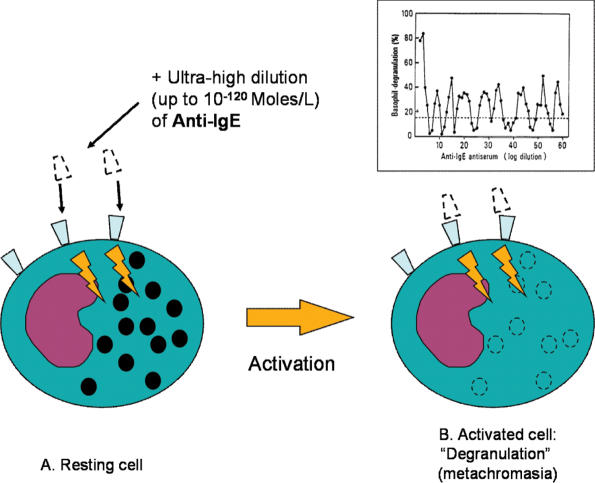Figure 3.
The scheme of the study reporting that basophils undergo ‘degranulation’ (metachromasia) not only at usual anti-IgE antibody doses (10−3 mg/ml) but also at extremely high dilutions (1060 or 10120 times lower than the concentrations usually leading to a molecular interaction) (2). The dose–response curves of Anti-IgE (see insert) at increasing dilutions first showed the disappearance of activity and then its re-appearance followed by various peaks of alternating activity and inactivity up to extremely high dilutions.

